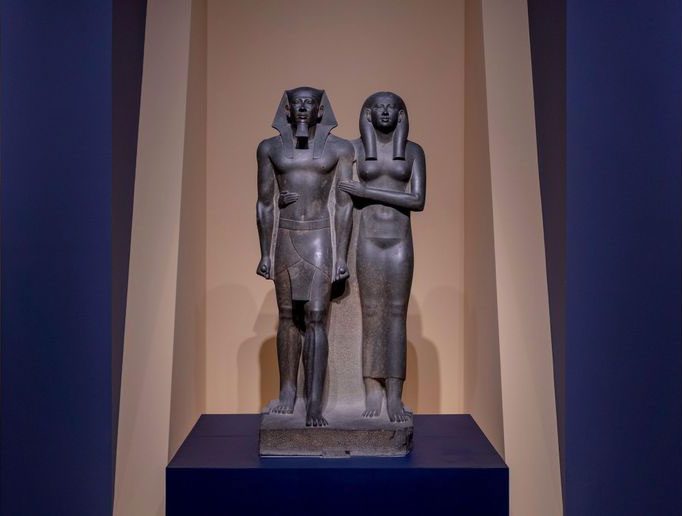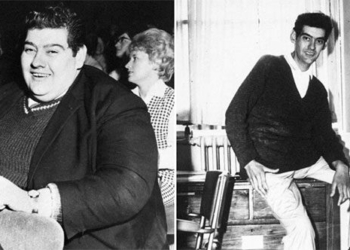All ancient Egyptians believed that they carried a Ka, loosely translated as soul or essential life force, when they entered this world and transitioned to the next.
They believed that the afterlife existed parallel to this world, which is why they continuously prepared for the next life. Food, drink, and wealth were accumulated throughout their lives. Therefore, the collection of necessities for the afterlife shaped the art of this period.
Ancient Egyptians believed that if the soul needed a body in this life, it would also need one in the next. And the Ka of the Egyptians required a vessel to reside in FOREVER. Thus, if you were a wealthy ancient Egyptian, you would arrange to be mummified upon death.

Statue of Menkaure and Queen Khamerernebty, 2548–2530 BC. (Image: Khan Academy).
The pharaoh – or the god on earth and the richest person in the kingdom – was not only mummified, but in case the mummification process failed, there was also a backup body standing (or sitting) beside them.
The Ka statues, although created based on the features of the pharaoh, were also idealized; they were full-body statues emphasizing youth and abundant health – therefore, they were not allowed to have dents, defects, scars, or wrinkles. Indeed, the urge for “artistic perfection” began long ago, providing the souls of the pharaohs with a perfect and eternally secure vessel.
Maintaining permanence was a heavy task for the artist’s works. For Egyptian sculptors, the concept of “form follows function” was expressed here. The form of a standing Ka statue has a rectangular shape, with the figure still attached to the stone slab behind; a solid block of stone that is not easily overturned. They used types of slate and the hardest (and most expensive) diorite.
The pharaoh was sculpted with tightly clenched hands, arms hanging down at the sides, rigidly facing forward. The stone connected the arms to the torso and the legs to each other. The pharaohs wanted to endure eternally with their bodies intact.
At first glance, Khamerernebty appears to be a charming queen. However, instead of depicting a scene of two lovers, this Ka statue reveals the high status of the woman in a stratified Egyptian society. Women had similar legal rights as men of the same social status – they could own property and enter into legal contracts. Moreover, it was the queen who belonged to the line of succession to the throne.
With the statue Menkaure and Queen Khamerernebty, we witness the introduction of the pharaoh. The queen, restrained in emotion and noble in posture, elevates Menkaure to king. She acknowledges Menkaure’s royal authority by placing her hand around the emperor, as if to say, “This is your leader!”
For the common Egyptians, the image of the pharaoh carved in stone was easily recognizable – which was good, as he rarely appeared before the people. If a male figure wore a pleated skirt, donned a ceremonial false beard (considered a divine characteristic), and wore a Nemes headdress (this element made the character’s head appear much larger), you would immediately know you were looking at the portrait of the most powerful living man.





















































